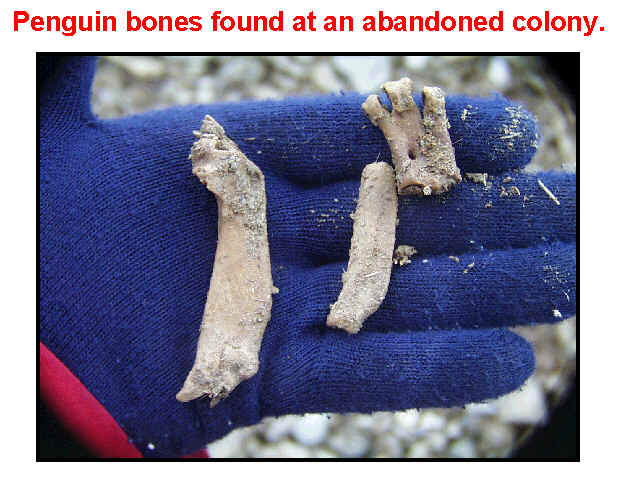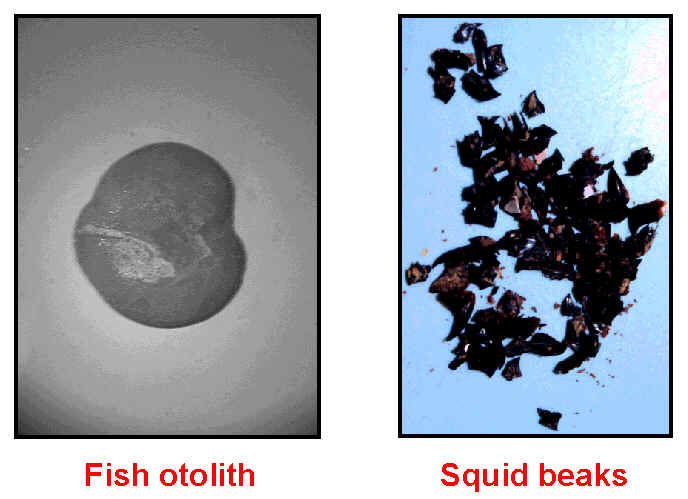
Materials and Methods
Study Area
This study was conducted in the Marguerite Bay region at Rothera Research Station in collaboration with the British Antarctic Survey (BAS). Data collected at Palmer Station (located on Anvers Island; Emslie et al 1998) also were used for comparison. These stations were ideal for this research since they are both located near abandoned and modern Adelie penguin colonies. These stations also are near two Adelie penguin metapopulation centers. One modern and three abandoned colonies were identified and excavated at Rothera Station in February 2000.
Osteological Identification
The identification of bones found at a particular site were important for determining which species of penguin inhabited a colony in the past. Identifications of bones were accomplished with penguin reference skeletons collected in Antarctica in February 2000 and osteological characters discussed by Emslie (1995). However, most bone recovered from the Rothera area was too fragmentary for specific identification. Thus, all bones were identified as either Pygoscelis or P. adeliae.

Radiocarbon Analysis and Calibration
Radiocarbon dating of penguin bones determined occupational history of an abandoned colony for comparison with paleoclimatic information. Three to five radiocarbon dates were obtained from surface and subsurface remains found at each site. Multiple dates taken from each of the abandoned colonies provided an accurate record of occupation and abandonment. Radiocarbon analyses were completed by Beta Analytic Inc., Florida. Radiocarbon dates of organic remains were corrected for the marine carbon-reservoir effect and upwelling of old water in the southern ocean and by using a D R = 700 +or - 50 B. P. (Stuiver et al.1998; Emslie 1995).
Paleodiet
Dietary remains recovered at Biscoe Point, near Palmer Station, suggest that Adelie penguins were feeding extensively on squid, especially Psychroteuthis glacialis from 679-450 years BP (Emslie et al.1998). Dietary remains from Litchfield and the Humbolt Islands consisted primarily of two species of fish, Pleuragramma antarcticum and Electrona antarctica, during the Little Ice Age (LIA). Evidence from abandoned colonies dating to 644 years ago suggests that, prior to the Little Ice Age (1500-1850 AD), Adelie penguins fed proportionally more on squid than fish. In contrast, dietary remains during the LIA consisted primarily of fish rather than squid. Modern diets appear to be similar to those prior to the LIA. This trend suggests Adelie penguins changed their diet in response to changing prey abundance, which was ultimately influenced by warming and cooling trends (Emslie et al 1998).
Dietary remains recovered from the sediments at Rothera were identified and quantified against the total amount of sediments excavated per site to determine relative abundance. The total number of individuals found (each species considered separately) within each level of each site was compared across all sites and levels. Volumetric corrections were then made by dividing the Minimum Number of Individuals (MNI) by the sediment volume (L) for the site providing a ratio of prey MNI per liter of sediment. These data were subsequently used to determine possible dietary shifts in relation to past climate changes.
